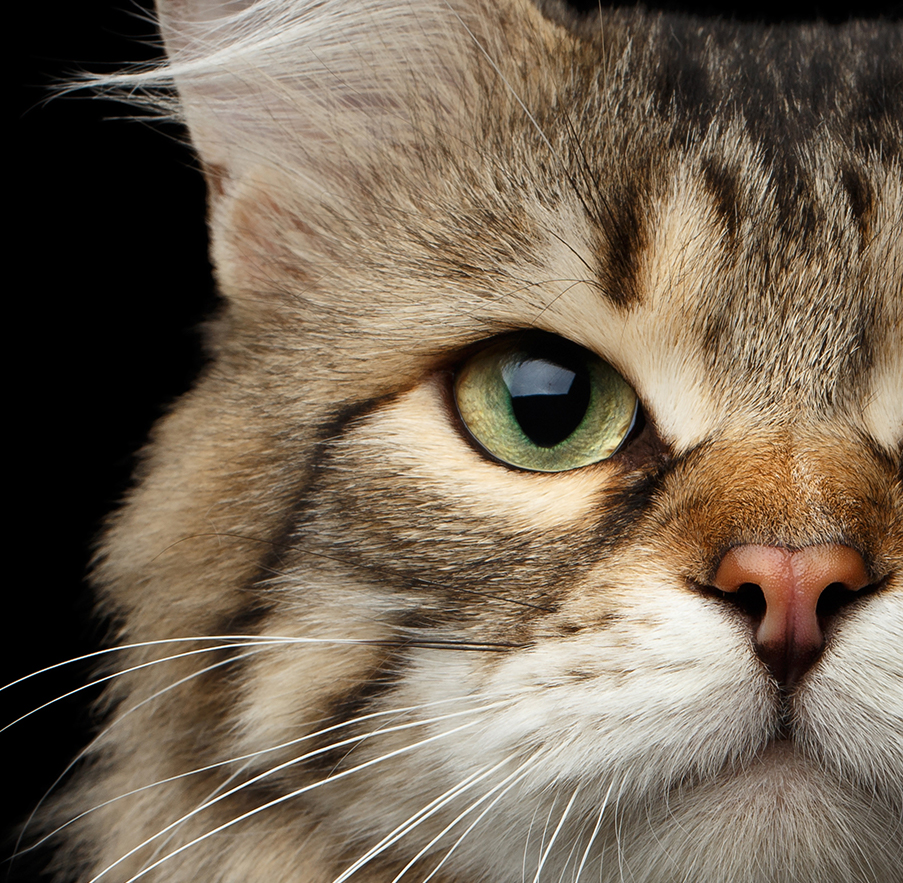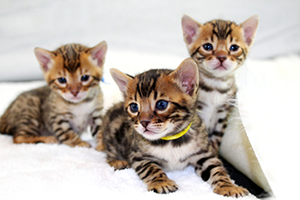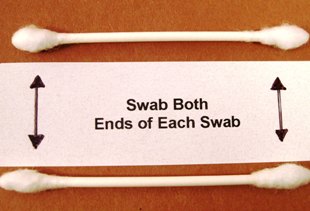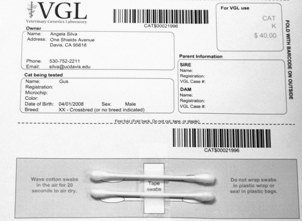Quick Summary

Click here for Price and Turnaround Time
Phenotype: Non-agouti cats do not have alternating pigments in their hair and appear solid aka self-colored.
Mode of Inheritance: Autosomal recessive
Alleles: A = agouti, a = non-agouti
Breeds appropriate for testing: Most breeds
Explanation of Results:
- Cats with A/A genotype will have agouti banded hair. They will transmit this agouti variant to all of their offspring, and all of their offspring will have banded hair.
- Cats with A/a genotype will have agouti banded hair. They will transmit this agouti variant to 50% of their offspring, and the offspring of an A/a genotype cat can be agouti or non-agouti depending on the genotype of the mate.
- Cats with a/a genotype will have self-colored (solid) hair. If bred to another non-agouti cat (a/a genotype), all offspring will also have non-banded, solid-colored hair.
Note: Overall appearance of the cat's coat also depends on expression of and complex interactions with other genes.
Cat Coat Color Panel
$57 per animal
Cat Coat Color + White Gloves (Birmans) Panel
$57 per animal
Bengal Coat Color Panel
$57 per animal
Birman Coat Color Panel (Bengal Coat Color + White Gloves)
$57 per animal
Cat DNA tests are carried out using cells brushed from your cat's cheeks and gums using household cotton swabs.
The cat DNA submission form with instructions and a place to tape the cotton swabs is sent to you via email after you place an order, and can be printed from your home computer. DNA test kits are no longer mailed.
Instructions
Step-By-Step:
1.
 Purchase regular household cotton swabs for cat DNA collection (the cotton swabs can be purchased at a pharmacy or drug store)
Purchase regular household cotton swabs for cat DNA collection (the cotton swabs can be purchased at a pharmacy or drug store)
2.

Make sure the cat has not had anything to eat or drink for at least 1 hour prior to collecting sample.
When swabbing kittens, isolate each kitten from the mother, littermates and any shared toys for 1 hour prior to swabbing. Kittens should not have nursed or eaten for 1 hour prior to collecting sample.
If collecting samples from more than one cat, make sure to sample one cat at a time and wash your hands before swabbing another cat.
3.
 Use both ends of the two cotton swabs for a total of four swabs.
Use both ends of the two cotton swabs for a total of four swabs.
4.
Place the cotton head of the swab between the cat’s gums and cheek and rub or rotate the swab back and forth for 15 seconds. Repeat with each cotton swab head, for a total of 4 swabs. We recommend swabbing a different area of the gums with each swab head.
5.
Wave the swab in the air for 10-15 seconds to air dry it before attaching it to the submission form.
6.
 After swabbing the cheek and gums, tape the cotton swabs to the bar-coded submission form printed from your MyVGL account.
After swabbing the cheek and gums, tape the cotton swabs to the bar-coded submission form printed from your MyVGL account.
ATTENTION:
- Do not collect saliva/drool – the key to obtaining a good sample is getting cheek cells on the swab.
- Do not rub swab on the cat’s tongue or teeth – this will result in poor quality sample.
- Do not collect a sample from a kitten that has recently nursed – the mother’s genetic material can rub off on the kitten’s mouth and contaminate the sample.
The agouti signaling protein (ASIP) gene, or Agouti, interacts with the melanocortin 1 receptor (MC1R) to regulate the switch from eumelanin (present as black, brown, cinnamon, or their respective dilutions) to phaeomelanin (present as red or yellow or their respective dilutions) pigment deposition in the hair shaft at certain points in the growth cycle of the hair. This results in individual banded hairs with the visual effect of an intermediate color between the two pigments. The length of the respective bands modulates the visual effect as well.
In domestic cats, a 2 bp deletion (c.123delCA) in the agouti signaling protein disrupts protein function. This mutation has an autosomal recessive mode of inheritance, thus when two copies are present, pigment switching is prevented from occurring. This results in a hair of uniform color (often called solid or “self-colored”). A separate gene causes patterns of dark stripes or blotches (tabby patterns) to be interspersed with lighter hairs. Hairs in the darker stripes do not undergo the shift between black and red-yellow pigment production during their growth, and thus remain uniformly dark. The areas outside of the dark tabby stripes are composed of agouti-banded hairs. In a non-agouti cat (a/a), the tabby pattern is still present, but it is just not visible since all the hairs in the pattern and outside the pattern are a uniform color.
There are instances where the tabby pattern can be seen despite a homozygous recessive (a/a) genotype at the agouti locus. A sex-linked red/orange cat will exhibit the tabby pattern regardless of whether it is agouti (A/A or A/a) or non-agouti (a/a). Under certain lighting conditions, faint tabby patterns are occasionally observed on the body in a/a cats, especially in kittens with the dilution variant. Lastly, melanistic (a/a) Bengal cats will often exhibit a faint tabby pattern as well.
